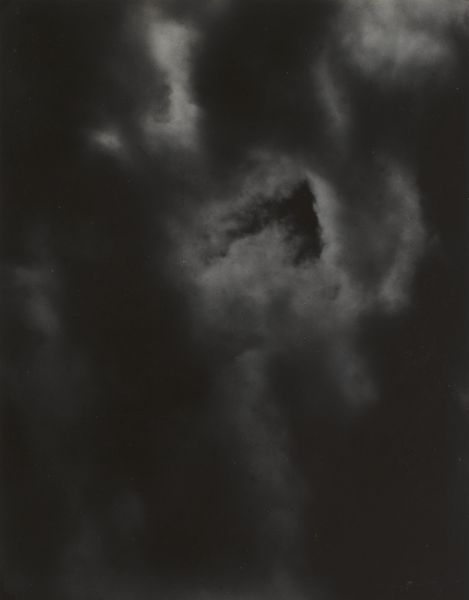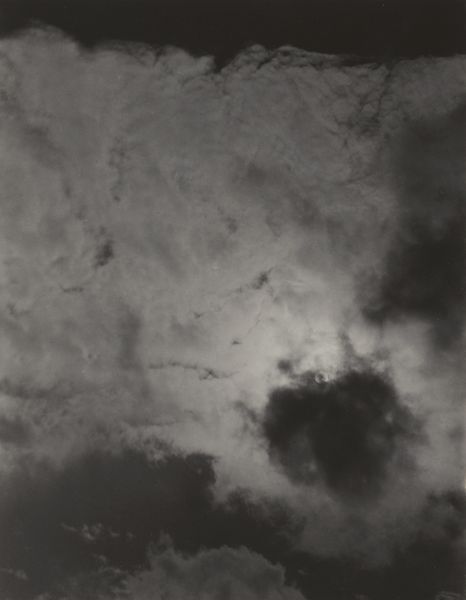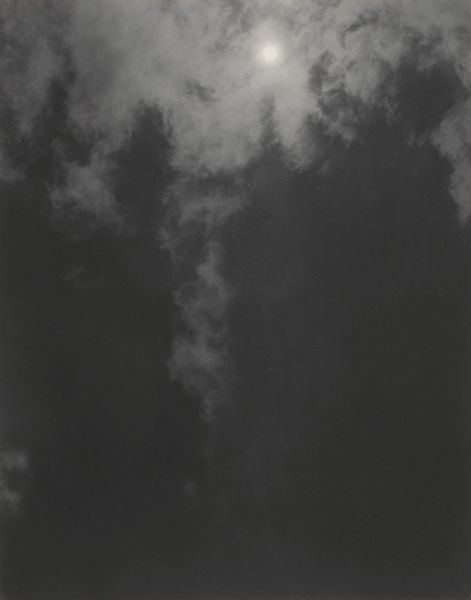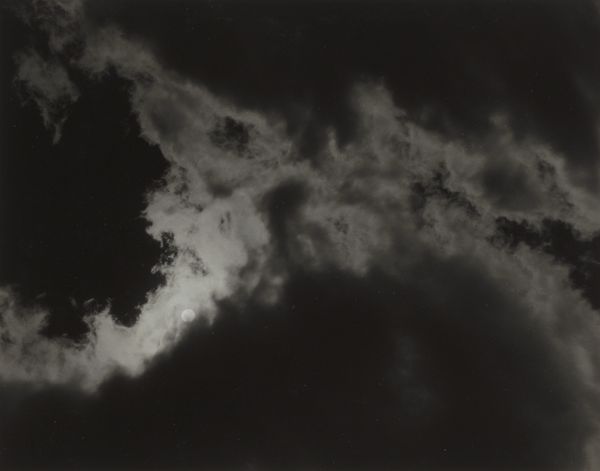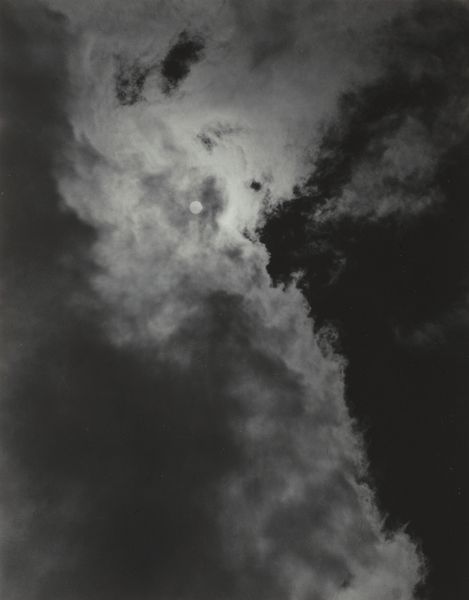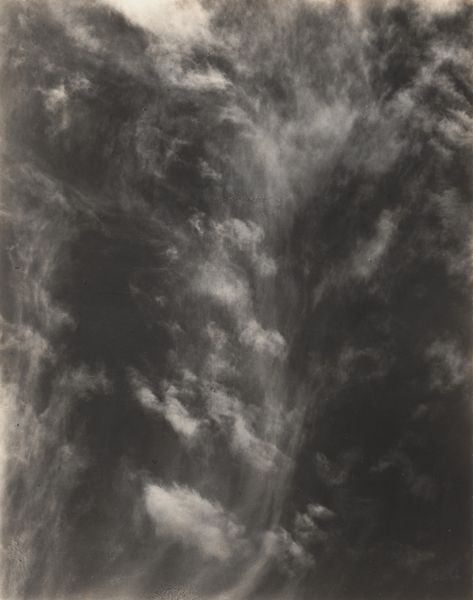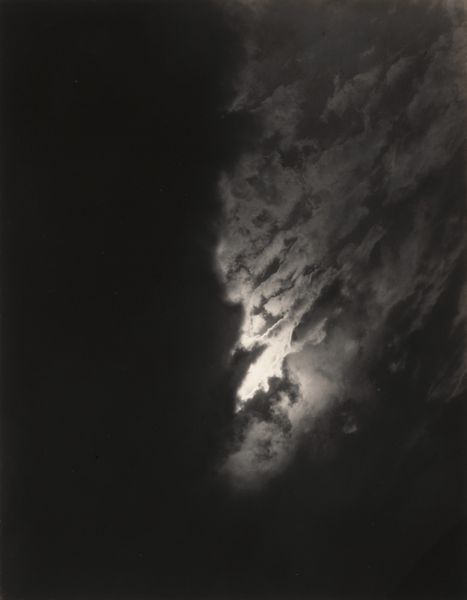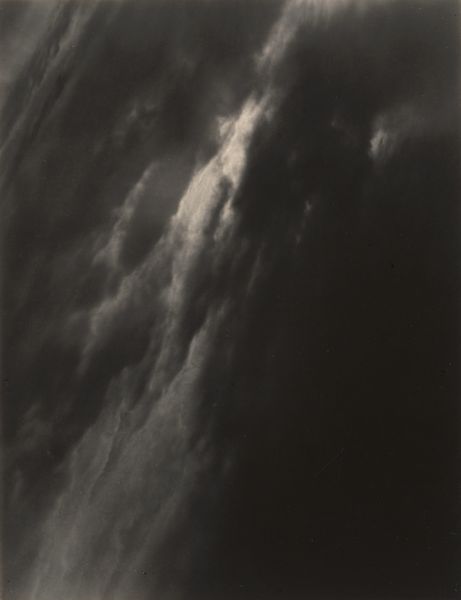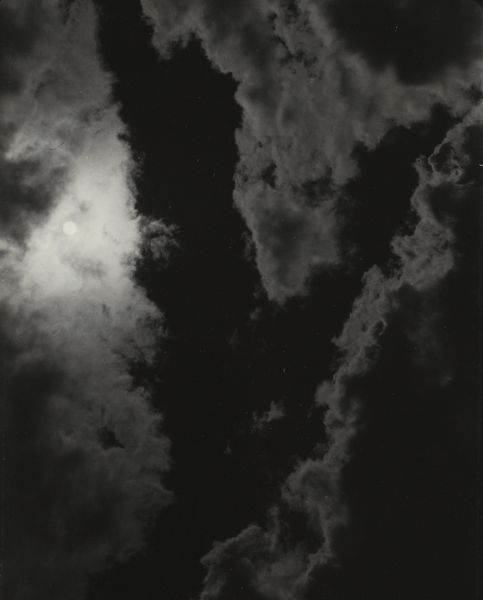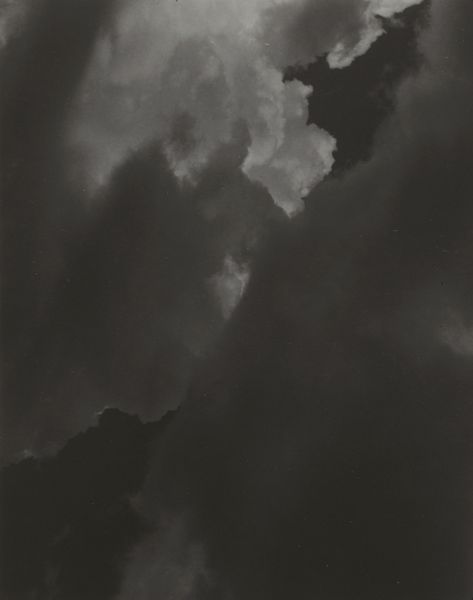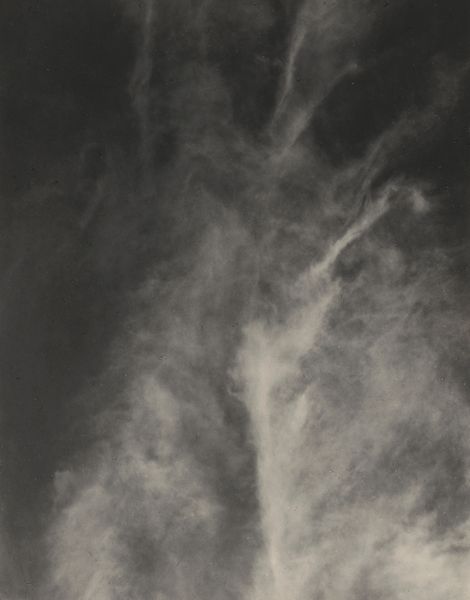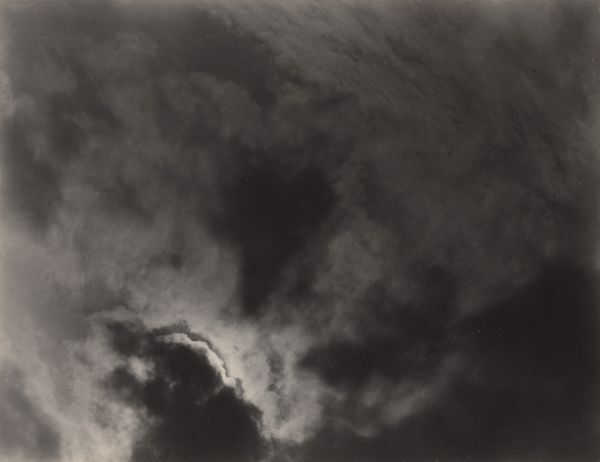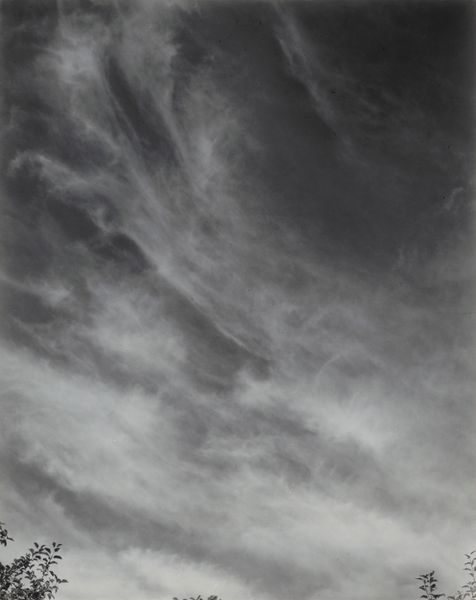
Dimensions: sheet (trimmed to image): 11.7 x 9.2 cm (4 5/8 x 3 5/8 in.) mount: 34.3 x 27.6 cm (13 1/2 x 10 7/8 in.)
Copyright: National Gallery of Art: CC0 1.0
Curator: Let's discuss this fascinating photograph, "Songs of the Sky," created around 1923 by Alfred Stieglitz. Editor: It’s overwhelmingly gloomy; the muted gray scale and mass of dark cloud shapes almost swallow the pinpoint light of the sun. Curator: Stieglitz was deeply involved with Pictorialism. We can understand these cloud studies, or "Equivalents" as he termed them, as explorations of pure form meant to evoke emotions or states of mind. For Stieglitz, they represented a move toward abstraction, mirroring inner landscapes. Editor: The textural richness, created with such subtle tonal gradations, speaks volumes. Consider how the strategic arrangement of forms, dark masses against lighter areas, creates a palpable sense of depth and volume within the frame. Curator: Exactly. In Stieglitz’s time, the turn of the century saw immigration explode, industry and technology dominate city life, and racism and gender constructs reinforced. He insisted art should mirror social change. These photographs challenged viewers to look beyond representation to something deeper. Many were outraged with his images of clouds, not seeing the symbolic meaning. Editor: You bring up such an important perspective, I was only analyzing it based on line, texture, and tonality. For me, Stieglitz's engagement with the materiality of photography transforms a seemingly simple subject into an almost sculptural meditation on light and shadow. Curator: I appreciate that. Thinking about the political upheaval that influenced art production is also a crucial step to take, though. Stieglitz worked with figures like Georgia O’Keeffe, exploring identity politics, radical equality, and shifting social standards. In that light, we might consider the light seeping through in the photograph, surrounded by overcast weather, as an attempt to visualize this change and the hope for transformation. Editor: So true; when analyzing tone, balance, contrast and all those compositional aspects as separate entities it’s easy to detach from all relevant sociopolitical perspectives. Thank you for the illuminating analysis of symbolism. Curator: Likewise; you drew attention to a compositional construction that might otherwise have passed unnoticed.
Comments
No comments
Be the first to comment and join the conversation on the ultimate creative platform.
